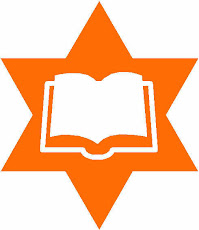I’m beginning one of my favorite types of projects. Fortunately, it’s on my “to-do” list for the summer, so I can both enjoy the task – and enjoy my enjoyment of it!
The setting: I teach a 14 week course for eleventh and twelfth graders who think they want to become religious school teachers. This will be my second year teaching this course – and boy, did I learn a lot last year!
Changes I’ve made already for this year:
1. I’ve chosen a text. Last year I didn’t use one, just photocopied materials from a variety of sources. The problem with that was I don’t think the participants ever “got” the big picture. I’d forgotten that text books often help provide a framework for learning and organize the material.
2. I’ve laid out the calendar year. I know which weeks we’ll be having class; when the breaks are.
3. I’ve decided the topics for each class. Using the text as a starting basis, I’ve re-ordered the sequence of some of the topics. I’ve made a preliminary decision to spend about half the class time (45 minutes) in the presentation of new material and half the class time in a “lab” setting, in which participants can practice what they’re learning.
4. I’ve decided at which points I need to supplement the text – and what materials I will use to do so.
The next step is to gather “lab” materials for participants.
Last year, I’d asked them to get a set of texts and teacher guides for the classes they were “madrichim-ing” in and use them as sources for the homework assignments I would give. That didn’t work very well at all. A) They didn’t like the homework piece. B) Not all the classes they were madrichim-ing in used texts. C) For the purposes of our class, there was no standardization.
So, the “obvious” step is to pull together materials that can be used in our class setting.
Last year the participants ended up working across the developmental span – first grade, fifth grade and seventh grade. So, I’ve made the decision to provide materials for a first grade class, a fourth grade class, and a seventh grade class. Participants will be able to chose with which age group they would like to work in our class setting.
In order to provide as authentic an experience as possible – I’ll need to set up some parameters, use a mission statement, and develop a scope and sequence. Why?
Parameters: each participating congregational school last year met on different days, and for different lengths of time. For the purposes of standardization, I’m choosing the following parameters for this year: Our hypothetic school will meet one day a week for two hours.
Mission statement: IF a school has a mission statement and IF its mission statement drives its program, one can tell a lot about the community and how it views Jewish ed. I’d like our participants to know that such statements exist and how they can inform a prospective teacher and/or parents. Our hypothetical school will use a mission statement from a previous school I directed.
Scope and Sequence: A school needs to look at its educational program as a unified whole. Given the amount of time available to it (see the posting from June 25), are the expectations reasonable? Does the content flow from year to year? Is the content balanced (over the entire educational period)? A scope and sequence helps use the scarce amount of time available in the most effective way possible.
The Scope and Sequence for our hypothetical school is my current task.
Friday, June 27, 2008
Subscribe to:
Post Comments (Atom)





No comments:
Post a Comment